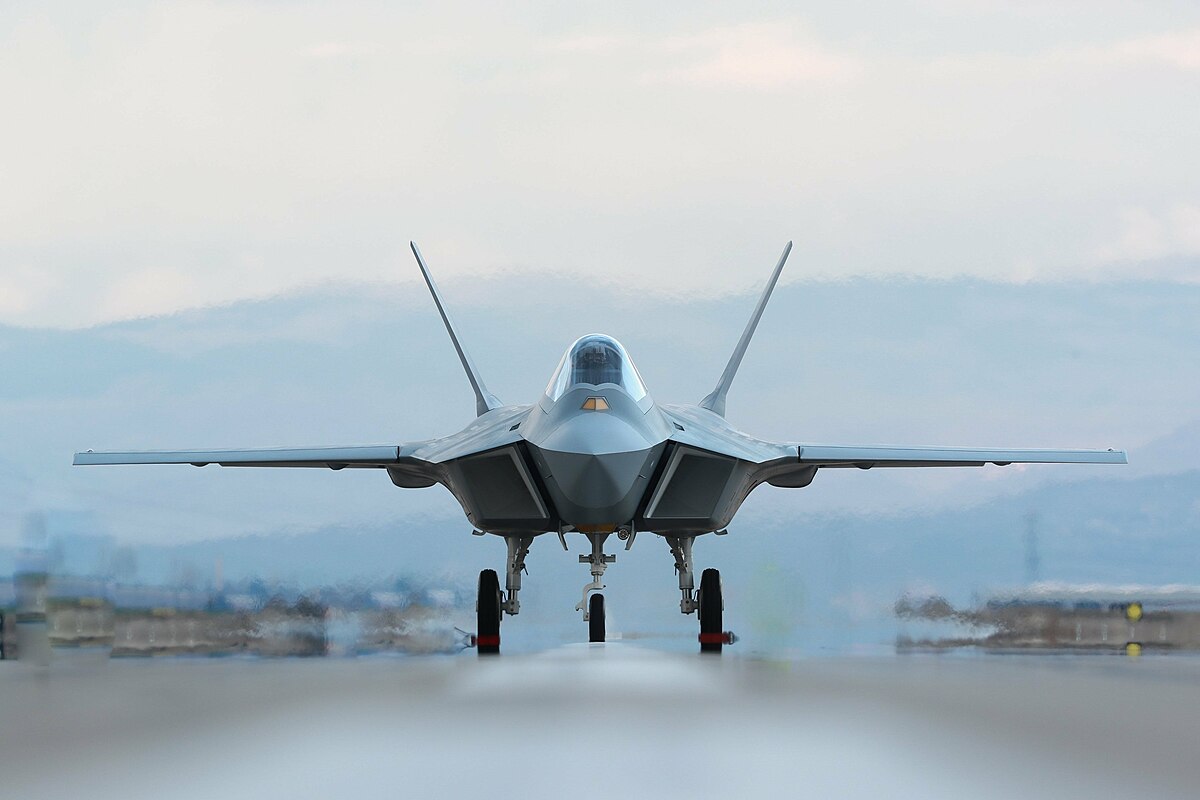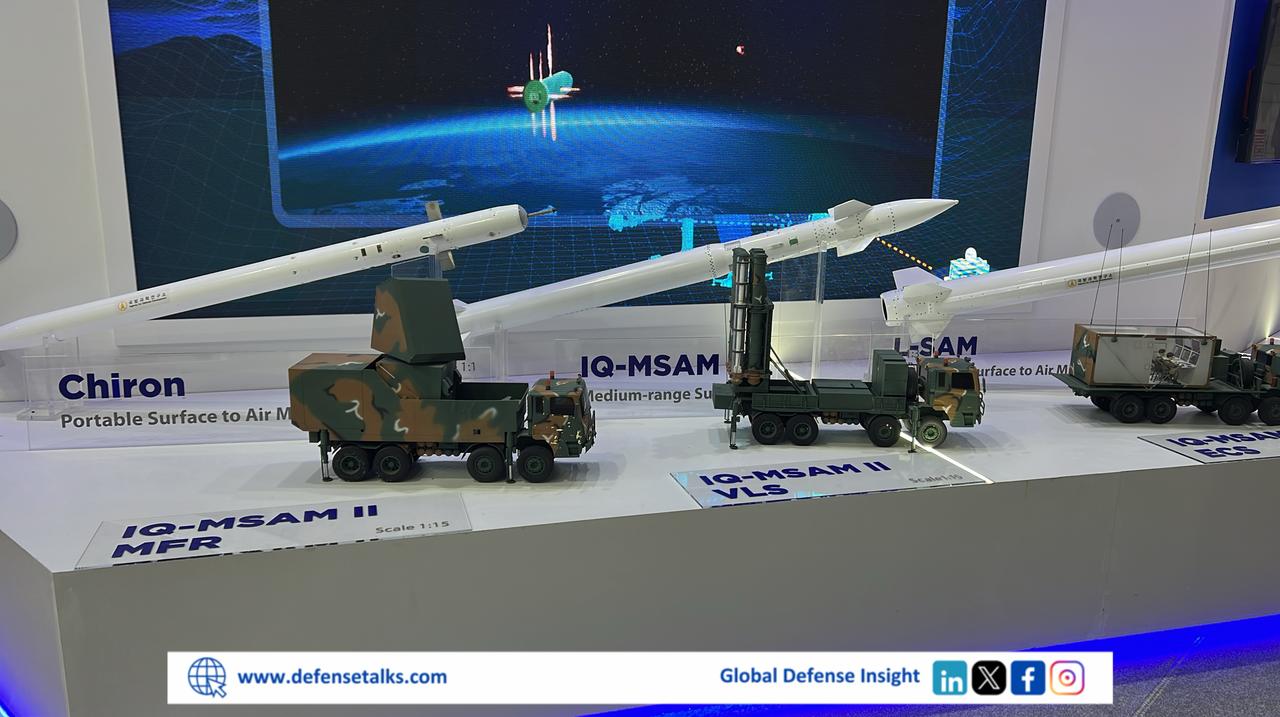A fifth-generation fighter project is an enormous undertaking and even apex aviation powers struggle to go the route by themselves. After the cost-prohibitive F22 experience US decided to share developmental and manufacturing burdens with partners for its next 5th gen fighter. The multinational F35 Joint Strike Fighter is an example of a multi-tier partnerships between the USA and nine nations, of which Turkey was a tier 3 member. Similarly, South Korean, European, and UK next-generation programs for KF-21, FCAS, and Tempest are all multinational projects. Only China for its J20 and J35 and Russia with Su57 have gone solo and the latter is struggling to scale up the production with only a few operational Su57 aircraft inducted so far. India, a major defense spender, with the fourth largest defense budget, has yet to showcase a prototype for its 5th gen AMCA and is still struggling with full-rate production of its four-decades-old programs for the anemic Tejas! For Turkey to have rolled out the first prototype of its fifth-generation fighter KAAN in 2023 all by itself, for a project envisaged in 2010, is an unparalleled and enviable feat and it seems envy is exactly what it has brought to some.
On 2nd August 2023, in Karachi, the Turkish Deputy Defence Minister Celal Sami Tüfekçi announced that Turkey would initiate discussions about Pakistan joining the KAAN project. A few weeks later, the Defense News published an article titled “Turkey seeks partners for TF-X fighter program amid fiscal uncertainty”. In that article, a Georgian defense analyst Eugene Kogan was quoted to have wondered that while Azerbaijan brings money what would the cash-strapped Pakistan bring to the KAAN project. Six days later, on 5th Sep the Eurasian Times followed up with an article disparagingly titled by its Indian author as “Bankrupt Pakistan ‘Burdens’ 5th-Gen TFX-Kaan Fighter Program; Lacks Financial, Tech Muscle To Aid Turkey”. This article is to dispel the negative light cast upon Pakistan’s fiscal issues and highlight its possible contributions to the KAAN project with Turkey.
Pakistan Air Force, the 8th largest in the world, has a long history of aircraft modifications, rebuilds, system integration, and manufacturing on a variety of Western and Chinese aircraft, engines, avionics, and equipment. Its F6, F7, Mirage and now JF17 rebuild factories have overhauled hundreds of aircraft and engines over several decades and have upgraded them with avionics from various sources. Besides, new weapons, sensors and technologies have been integrated to keep these platforms relevant for their missions. Pakistan Aeronautical Complex (PAC) at Kamra has been manufacturing the Mushshak (400+) and K-8 (~50) trainers and JF17 fighter (~150) aircraft and has successfully exported these aircraft to several countries. PAC Kamra also overhauls aircraft engines such as the T56, PW F100, TFE731, ATAR 09C, etc, and its aviation factories manufacture and rebuild various avionics including radars, weapons and mission management computers, radar altimeters, RWR, INS, IFF, etc. The extensive infrastructure, human resource, and experience has given Pakistan a substantial base in aircraft manufacturing, maintenance, and systems integration. When two PAF Erieye AEW aircraft were badly damaged in a 2012 terrorist attack, even Saab, its manufacturer, initially considered the aircraft as unrepairable, yet PAC structural engineers rebuilt both aircraft and through the learning process forged ahead to establish a comprehensive multidisciplinary Aviation Research Indigenisation & Development AvRID.
Pakistan’s history of success in aviation technologies extends to air-launched munitions as well. The Air Weapons Complex (AWC), Global Industries and Defence Systems (GIDS), and other national defense manufacturers have built a variety of standoff munitions, some of which are battle-tested. The H4 glide bomb with an Infrared camera as its sensor and guided through a command data link along with the GPS-guided bombs with Range Extension Kit (REK) were delivered precisely and precariously close to Indian targets during operation Swift Retort to send a message in response to India’s failed air attack at Balakot. In addition, air-launched cruise missiles such as Raad and Raad-II have been inducted in service for several years and lately a stealth missile ‘Taimoor’ has even been offered for export. PAC Kamra has had vast experience in integrating different weapons and sensor systems of Western, Chinese, South African, Turkish, and indigenous origins into a variety of aircraft.
In 2017 Pakistan had started working on preliminary designs of a fifth generation fighter under ‘Project Azm’. PAF seemed to have realised from the start that building a 5th generation fighter all by itself may not be possible. Yet there appears to have been a need to explore various design possibilities and build up in-house expertise to understand the myriad of technologies going into 5th generation fighters and capabilities they could bring in order to firm up the requirements definition and take informed decisions. Several designs were studied and computer modeling was carried out as apparent from various images released on various media. Considering that entry into such projects would be denied to Pakistan by the West, the apparently available options are partnering with China for its J35 fighter or with Turkey for the TFX. A chief consideration could be the degree of inclusion into designing and sharing of software development, manufacturing burden, and the technology transfer that the possible partner would be willing to permit.
Both the Chinese J35 and Turkish TF-X are possible programs to partner in development and manufacturing. The J35 being a more mature program is being developed by China as a carrier-based twin-engined aircraft while TFX as land based large air superiority fighter is under development and with significant scope for collaboration. The Chinese J35 has had several prototypes tested for a number of years and images of what appears to be the latest iteration of the aircraft are now appearing in the media along with the fast completing Type 003 aircraft carrier ‘Fujian’ which is likely to host these fighters. With a complete aerospace technologies ecosystem of its own and financial heft, China has no need to partner for development of a fifth generation aircraft. At the same time Turkey Aerospace Industries (TAI), having closely collaborated with Pakistan on a number of projects and after considering the latter’s capabilities and capacities, is exploring possible partnering with other nations and has reached out to Pakistan, its largest defence customer. Turkey itself had been a partner in F35 development and it may have observed the successful JF17 program PAF is executing with China. TAI and other Turkish defence companies like Bayraktar, Aselsan, Havelsan, etc, have found success in employing young talent and this was one of the main attractions that brought the company to Pakistan. Turkish engineers and its technical workers are in high demand in European industrialised countries particularly in Germany where they are attracted by higher emoluments. This brain drain to Europe is a major challenge for Turkey. Retaining its highly skilled and trained workforce can have a significant impact on Turkey’s vast and growing aviation industry. Conversely, Pakistan has a large pool of highly talented engineers in various fields especially mechanical, electrical, software, aerospace engineering and now increasingly in Artificial Intelligence and Machine learning. It has a number of well respected engineering universities and institutes such as National University of Science and Technology (NUST), Foundation for Advancement of Science and Technology (FAST), Ghulam Ishaq Khan Institute of Engineering Sciences and Technology (GIK), NED University, Air University, to name a few. TAI has even signed an MOU with NUST and has already recruited a number of engineers from Pakistan. Besides, KAAN’s second manufacturing line at PAC Kamra could benefit from the well trained manpower and extensive facilities at that organisation.
Pakistan Aeronautical Complex has extensive experience of collaborating in design and manufacturing of fighter aircraft with China. Its highly successful and cost-effective JF17 program has not only resulted in transfer of technologies, training of human resource, design and testing but also weapons and sensors systems integration. PAC has been able to integrate many indigenous munitions and sensors and was the first fighter outside Turkey to be equipped with the Aselsan’s ASELPOD. JF-17s equipped with ASELPOD have been exported to Nigeria where they have seen operational use. The JF17 project led to PAC Kamra being equipped with an efficient assembly line, well equipped workshops for aircraft structure and avionics manufacturing, comprehensive aircraft testing, certification and flight tests regimes. Today more than 140 JF-17 s in Block-I, II and lately Block-III and twin seat JF-17B are flying with the PAF. This successful program has proven Pakistan’s ability to be a valuable and reliable partner in a complex long term aerospace project.
From its history and development profile it is clear that Pakistan Air Force has not been a platform focused organisation. Rather, its success lies in systems approach. It has always tried to develop and integrate platforms, weapons and sensors, C2 and human resources into its fighting systems. KAAN is not just going to be a high performance fifth generation fighter but a fighting system with accompanying next generation weapons, sensors including an unmanned combat wingman Kizilelma – a Baykar product. Baykar, a fabled aerospace and drone power house, is already partnering with Pakistan for research and development on several projects and its game changing TB2 and Akinci UCAVs have been recently inducted in PAF with indigenous weapons’ integration being carried out. Baykar as well as Turkish Aerospace Industries (TAI), the manufacturer of KAAN and Hurjet, have both established their offices at the PAF National Aerospace Science and Technology Park (NASTAP). The recently inaugurated NASTP is part of Pakistan’s aviation city project aiming to develop and incubate aviation-related technologies including aircraft design, radar technology, command and control, artificial intelligence and data analytics, space technologies, communication and networking, electronic warfare, cyber technologies, etc. Through this system of R&D institutions, linked with public and private universities and companies, Pakistan has set its aims to become an aerospace power.
Pakistan has always opposed an arms race in South Asia. It is never one to introduce a new capability or a weapon type but it has tried to keep a balance at the strategic and operational level. In case India procures a 5th generation fighter such as the Su57 or F35 or is able to operationalize its fifth-generation Advanced Medium Combat Aircraft (AMCA), Pakistan needs the option to respond and could directly procure the J35 fighter from China similar to its procurement of J10C and PL15 to counter Indian induction of Rafale and Meteor missiles. China has more than a decade of experience in manufacturing 5th generation fighters. It has mature technology base, well-developed sensors particularly GaN based highly advanced AESA radars, Distributed Aperture System (DAS), high speed datalinks, Cooperative engagement capability (CEC) and now recently has finally found success with reliability and performance of its high thrust, super cruise capable, WS15 engine for its J20 fighter and WS19 engine for the under development J35 carrier based fighter. Pakistan also needs to think about long term technology induction and diffusion, the freedom to tailor and integrate weapons and systems, build up indigenous next generation technologies base and reduce import costs. Partnering with Turkey on KAAN, Kizilelma, and other aerospace, naval and defence technologies, such as Jinnah class frigates, is a path for building mutually benefitting technology clusters sharing costs and capacities across value chains in both countries and other partner nations.
True that presently Pakistan has foreign exchange liquidity problems, and is struggling to meet its loans’ payments. It is under another predatory IMF loan program but at the same time it has not defaulted on any of its major projects including development projects and defence procurements. The size of its formal and informal economy is large and has enough foreign exchange inflows from remittances and imports to sustain financial capacity for programs vital to its national security and it has successfully weathered similar crises throughout its history. After the Operation SwiftRetort Pakistan has given even more emphasis to maintain deterrence and enhance its capacity to respond, especially through air force, whose cutting edge it considers vital to its national security. It has recently inducted J10C and JF17 Block-III fighters equipped with AESA radars and long range BVR missiles and has increased its operational readiness including exercises with friendly nations, simultaneously participating in 2 major exercises in China and Egypt in September 2023. PAF also hosted a major 14 nation mega-exercise Indus Shield in the month of October 2023 where the elements of air power including fighters, AEW, EW, UCAVs, refuellers, GBADs participated as a joint integrated force.
Despite fiscal woes, Pakistan’s acquisition of Milgem Corvettes and advanced UAVs from Turkey has progressed smoothly with the recent commissioning of the first ship of the class BABUR and induction of Akinci and TB2 from Turkey. To think of value in purely monetary terms is short-sightedness. If throwing money at a problem could have brought success then Indian Tejas programs would have been a resounding one. After 4 decades, since the inception of the LCA project, only 40 Tejas aircraft have been delivered to IAF so far. This is despite billions poured into a program that has been fraught with indecisions, delays, and cost overruns. It is therefore a grave mistake to judge Pakistan’s contribution to KAAN in purely monetary terms. The value it will bring to the project in terms of infrastructure, facilities, capabilities, capacities, educated and trained technical human resources, experience and expertise in a multinational program management, economies of scale of the 8th largest air force and lifecycle support is substantial and unmatched among all possible partners for KAAN. And even in the financial aspect, Pakistan is fully capable of financing its share as evident from a number of defence projects it is executing with partner nations such as Turkey, China, Romania and South Africa.
Author: Fatima Kiyani
Fatima has done BS Mathematics with a minor in Data Science. She is presently a MS Data Science student at National University of Science and Technology. Her interests include mathematical modelling underlying Machine Learning. She is a defence technology enthusiast and passionate about fighter aircraft. She can be reached at fatima.kiyani.sufaira@gmail.com.
Table of Contents
ToggleFatima Kiyani
Fatima has done BS Mathematics with a minor in Data Science. She is presently a MS Data Science student at National University of Science and Technology. Her interests include mathematical modelling underlying Machine Learning. She is a defence technology enthusiast.














